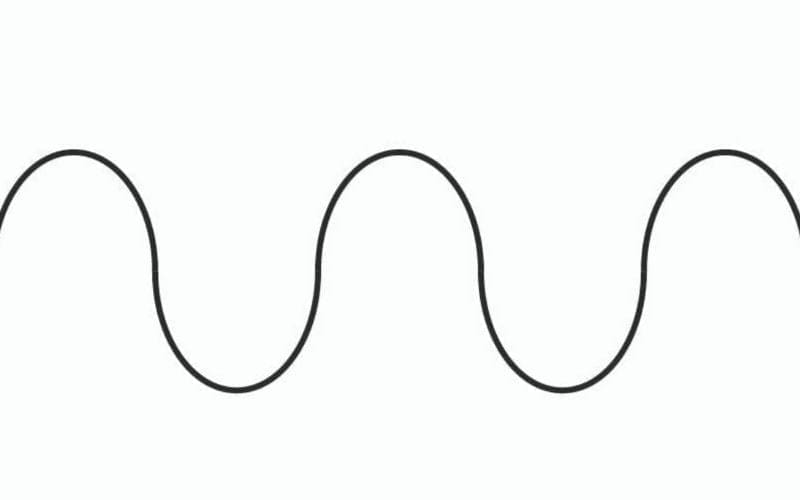When getting started in the music production world, one of the first things to do is to get comfortable with the concept of sound frequency and the frequency of sound waves. Sound frequencies make up the sonic color palette that sound engineers and producers use to create, mix, and master.
Anyone involved in the production of music, at the least, should understand the basics of sound frequency and how it works. Every record you have heard or danced to is made up of a collection of sound frequencies. The music itself is just a collection of sound frequencies that sound good together. In this article, you will learn what a sound frequency is and how it works. You will also learn about the frequency spectrum, the frequency of sound waves, and how to train ears to identify certain sound frequencies.
Note: We are going to leave out the science and focus on sound frequency as it relates to music production.
What Is A Sound Frequency?

Sound is a collection of waveforms. The waveforms move through the air, reach our ears, and we then hear these waveforms as sound.
Frequency refers to how often, or how frequently these waveforms occur in a specific amount of time.
So, when we use the phrase Sound Frequency, we are talking about the frequency of sound waves in the air. In terms of how to measure sound frequency, we use Hertz (Hz) as the unit of Sound Frequency. For example, 10 Hz, 50 Hz, 500 Hz, etc. We can use Kilohertz (kHz) as a unit of Frequency in the thousands. For example, 10 Kilohertz (kHz), 5 kilohertz (kHz), etc.
How Does It Work?
If you pluck a guitar string, tap a table, or sing a note, the object or instrument you are using vibrates, which then disturbs particles in the air. The disturbed air particles subsequently disturb the ones next to them, and the ones next to those, on so on. What you get is a domino effect of air particles bumping into each other hence the term frequency of the sound wave.
If you could see this happening around you, it would look something like this.

Can you see how the air particles are starting to look like a wave? Particles separating, then crashing into each other, separating, then crashing, etc. We call this a sound’s waveform.
We like to illustrate the waveform of a sound frequency by drawing it like this:

To understand the basics of a sound frequency, all you need to understand is:
- Sound is a collection of waveforms in the air that we perceive as sound.
- Waveforms are the particles crashing into each other and separating, repeatedly.
- The number of waveforms produced in a certain time frame – we use per second – is referred to as Frequency.
Note: Waveform and Frequency are often used interchangeably. Be aware of this.
Fundamental Frequency & Harmonics

In reality, when instruments or objects produce a sound, they produce multiple sound frequencies at once. Every sound source will produce Fundamental Frequency and Harmonic Frequencies, also known as Harmonics. The Fundamental Frequency is the main frequency of the sound wave.
Harmonic Frequencies are waveforms that have a mathematical relationship to the fundamental frequency. For example, harmonic frequencies will be a third of the size of the fundamental frequency, others will be a ninth of the size, others a fourth, and so on.
A recurring harmonic frequency type in every unique sound is an octave harmonic. The mathematical relationship of this harmonic is always that of the fundamental frequency. For example, if the fundamental frequency is 600 Hz, the octave harmonic of this is 12, 000 Hertz (or 12 kHz)
Harmonic frequencies are always louder than fundamental ones. Every sound produces a unique fundamental frequency and a set of harmonics. What determines how something sounds is the fundamental frequency of the sound source and its harmonics. They interact with one another and create a unique sonic coloring.
Human Hearing & The Frequency Spectrum
The hearing frequency range for all healthy humans is 20Hz – 20 kHz. Some people’s hearing range may vary by 10 Hz or so, but it is a general rule that humans hear between 20 Hz and 20 kHz.
Animal hearing spectrums are similar to ours and then some. Whales, for example, can hear below 10 Hz, bats can hear up to 100 000 Hz, a dog up to 46 000 Hz, etc. Since our hearing spectrum is between 20 and 20 kHz, we hear all instruments (and everything else) in this spectrum.
Engineers and producers use the human hearing frequency spectrum to create and sculpt what we hear on records, with the use of an equalizer. I will talk more about equalizers later!
Low Frequencies, Middle Frequencies & High Frequencies

We like to organize frequencies along the frequency spectrum into 3 groups:
Low Frequency Sound – 20 to about 600 Hz
Low frequencies are often referred to as lows, low-end, or bass frequencies.
Middle Frequency Sounds – 900 to 5000 Hz
Middle frequencies are often referred to as mids, treble, or middle.
High Frequency Sounds – 6000 to 12 000+ Hz
High frequencies are often referred to as highs or high end.
All audio engineers and producers speak in terms of frequencies, for example, “Add more mids to the guitar tracks”, “this mic will capture that low end in your kick drum” or “The vocals need more highs”. A lot of the time, there is a need to add two more frequency groupings that we call Low-Mids and High-Mids.
As you can probably guess, Low-Mids sit between low frequencies and middle frequencies and High-Mids sit between middle frequencies and high frequencies. Every frequency spectrum group is present in most instruments (to varying degrees of intensity). For example, pianos have lows, mids, and highs, guitars have lows, mids, and highs, vocals have a lot of mids and highs, etc.
We also like to assign frequency groups to instruments to categorize them sonically. It makes it easier for engineers, producers, and musicians to communicate when talking about the sonics of a recording or instrument. Low frequencies are typically assigned to instruments like the double bass, electric bass, synth bass, kick drums, and other drums. Middle frequencies are assigned to vocals, acoustic guitars, electric guitars, synthesizers, and pianos. High Frequencies are assigned to cymbals, vocals, guitars, electric guitars, and synthesizers.
The perception of sound is somewhat subjective, so when you are talking to someone using the above terminology (low end, middle frequency, the highs, etc..), you will have to adjust your understanding of frequency groups accordingly.
Equalizers
A great way to get comfortable with frequencies and the frequency spectrum is to play around with a graphic equalizer.
If you don’t know, an equalizer is an audio and music production tool that allows audio and music professionals to manipulate frequencies along the frequency spectrum.
Ear Training: Identifying Frequencies
Ear training is a big part of developing your audio engineering and production skills. Good producers and audio engineers put in the time to develop their hearing. They learn to identify frequencies and frequency spectrums within instruments and other sounds. This helps them record, mix, and master music and make it sound the way it does.
There are two things you need to develop your listening skills – time and practice.
Time & Practice
As you work on music projects, mix songs, and mess with synthesizers, you are passively teaching yourself how to listen to and adjust the sound. Over time, you become very good at this. It is really that simple.
Over time making and playing music, you develop your listening skills passively. You will notice improvements in your listening skills too!
There are also some ways to practice listening. A great way to practice and level up your listening skills is to use the 1000 Hz method. The 1000 Hz method aims to familiarize yourself with how it sounds. If you can internalize the sound of 1000Hz, you can use this as a reference point to map out the entire frequency spectrum. For example, as you know, dividing a frequency by 2 gives you the lower octave of the original frequency. Similarly, if you double a frequency, you get the octave above the original frequency.
With this simple technique and a rough idea of what 1000Hz sounds like, you can roughly map out the frequency spectrum: 1000Hz is your starting note/frequency. To find low mids, just divide 1000 by 2 to get 500 Hz. If you know what 1000Hz sounds like, you know that 500Hz sounds the same, only an octave lower. Repeat the process to move up and down the frequency spectrum. Divide 500Hz by 2 to get 250 to get those bass frequencies.
To move up the frequency spectrum, just multiply by 2 instead of dividing. This is an excellent way to level up your listening skills, and it does work.
Conclusion
There is so much information on audio frequency and how it relates to music production. If you are starting in music production, it’s in your best interest to learn about sound and the frequency spectrum. Take advantage of Youtube, Reddit, books and our blog to get started. It is an easy and fun learning experience that will benefit you in the long run!
So, now that you have expanded your knowledge on sound frequencies to use in your music production, we want to help get those tracks noticed by promoting your music and improving your streaming presence! Also, check out our Sync opportunities page to get your music in TV and Film. Try it out for free today by signing up.










